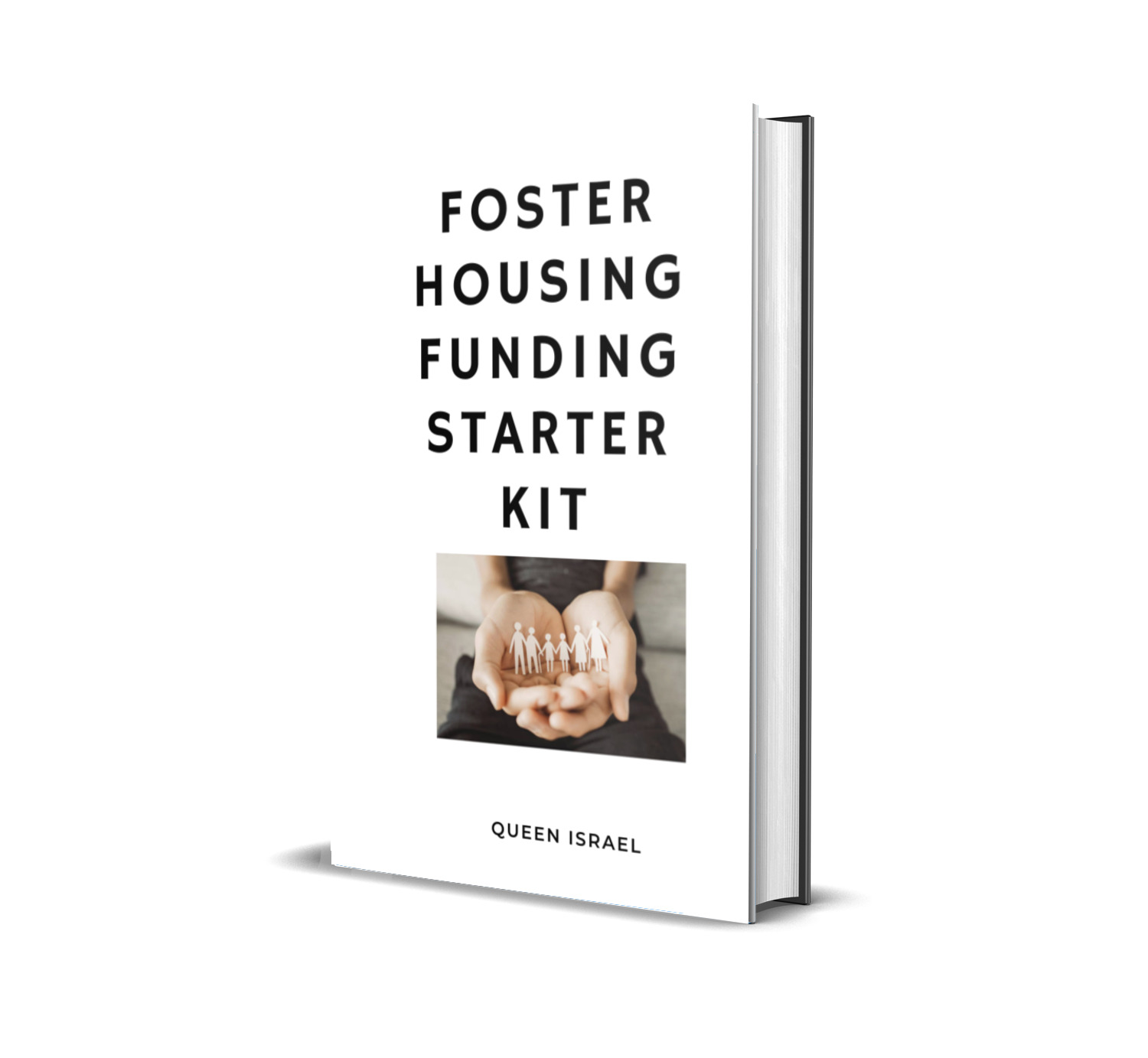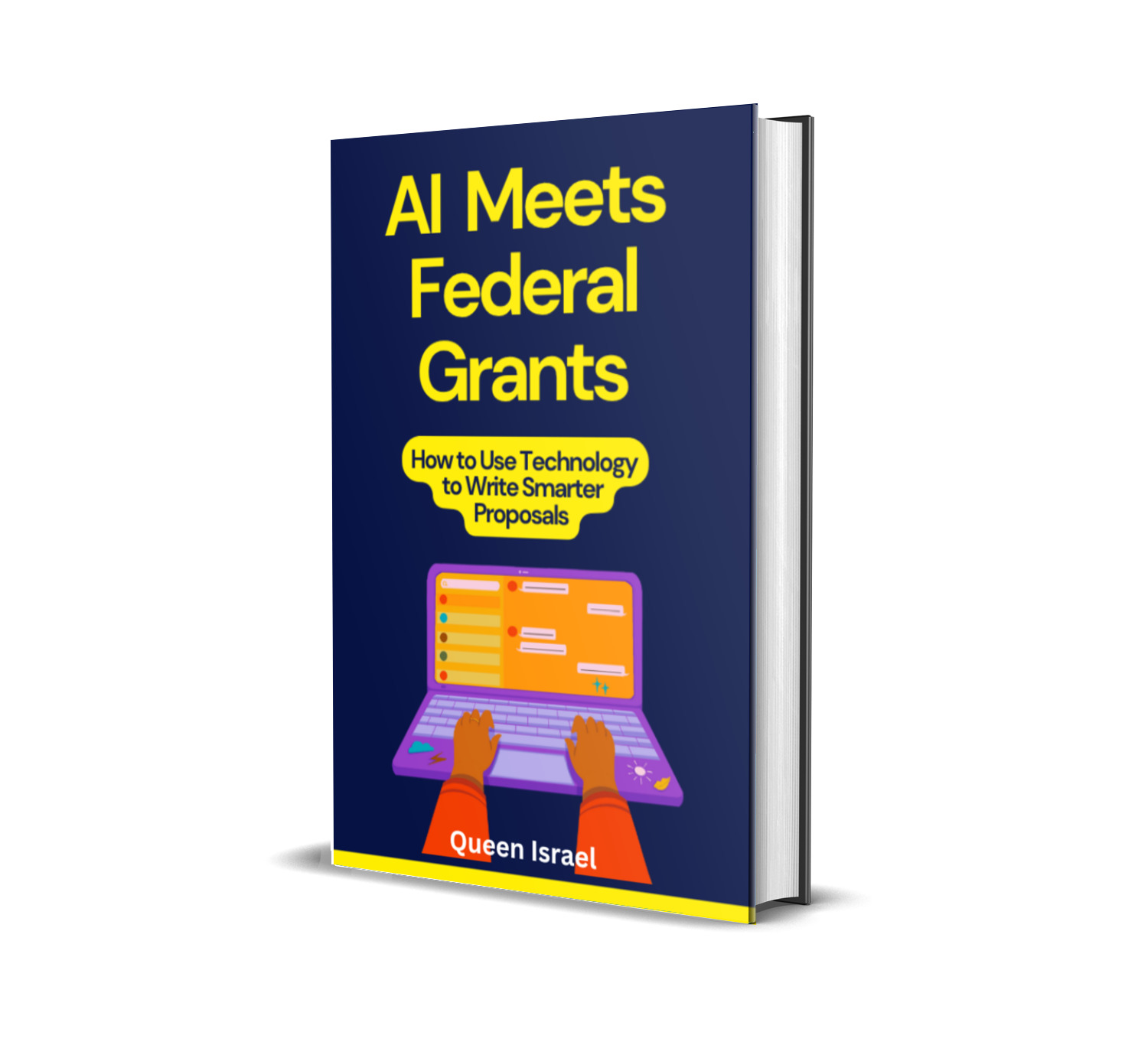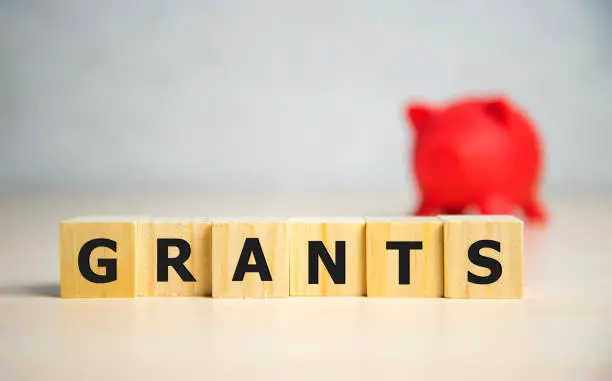If you’re a nonprofit organization or business based in Missouri, you’re in luck! Missouri State grants are an incredible resource to fuel the growth of your mission, whether it’s funding a community project, launching a new initiative, or supporting a business venture.
But navigating the grant landscape can be tricky, and understanding how to access these funds can feel overwhelming. Don’t worry – you’ve come to the right place!
In this post, we’ll dive into everything you need to know about Missouri State grants, how to apply for them, and how you can increase your chances of securing funding.
Understanding Missouri State Grants: Why They Matter
Missouri offers a wealth of opportunities for nonprofits, small businesses, and government organizations to secure funding through state grants.
These grants are critical in helping organizations carry out their missions, whether it’s promoting education, fostering economic development, or improving healthcare services.
The availability of funding through state grants means that if you have a compelling project or business idea that benefits your community, there’s a good chance that Missouri’s grant programs can support your efforts.
State grants are designed to address local needs while fostering innovation and growth. They not only provide the necessary capital but also serve as a form of validation for your project, making it easier to attract additional funding from other sources in the future.
Types of Missouri State Grants
Missouri State grants come in many shapes and sizes, tailored to meet the diverse needs of its residents and organizations. Let’s explore the main categories:
- Economic Development Grants:
- Purpose: These grants aim to stimulate job creation, support business expansion, and drive economic growth.
- Programs: One popular program is Missouri Works, which helps businesses make capital investments and create jobs.
- Case in Point: Imagine a small manufacturing business looking to upgrade its equipment to improve efficiency. Applying for an economic development grant could cover a portion of that cost, leading to increased production and hiring within Missouri.
- Community Development Grants:
- Purpose: These grants focus on revitalizing neighborhoods, improving infrastructure, and uplifting low- to moderate-income communities.
- Programs: The Missouri Community Development Block Grant Program (CDBG) is a key resource for community-driven projects.
- Real-World Impact: A nonprofit organization might use a CDBG grant to renovate a community center, providing a safe space for after-school programs, job training, and community events.
- Education and Research Grants:
- Purpose: To support educational initiatives, innovative research, and workforce training programs.
- Programs: Missouri Research and Education Program (MREP) supports research projects and education programs that drive workforce development.
- Success Story: A local university securing a research grant to develop new technologies in agriculture, ultimately benefiting Missouri’s farming communities by improving crop yields through innovative methods.
- Environmental Grants:
- Purpose: Aimed at promoting sustainability, conserving natural resources, and addressing environmental challenges.
- Programs: Various programs through the Missouri Department of Natural Resources (DNR) offer grants for projects such as water conservation, renewable energy, and land preservation.
- Example Project: A local nonprofit working on river clean-up initiatives can apply for an environmental grant to fund their efforts in preserving Missouri’s waterways.
- Health and Wellness Grants:
- Purpose: To improve public health, enhance healthcare services, and support wellness initiatives.
- Programs: The Missouri Department of Health and Senior Services (DHSS) offers grants to programs that address public health concerns, from mental health services to chronic disease management.
- Community Benefits: A community health organization might use these funds to launch a mobile health clinic, increasing access to healthcare services in rural areas.
The Grant Lifecycle: From Research to Results
Let’s break down the process of engaging with Missouri State grants into manageable steps, using a friendly and conversational tone to guide you.
Step 1: Research and Identify the Right Grants
Before writing anything, it’s essential to spend time researching which grants align best with your project or business objectives. Here’s how to go about it:
- Leverage Online Resources: Start by visiting official websites like the Missouri Department of Economic Development (DED), Missouri Department of Natural Resources (DNR), and Missouri Department of Health and Senior Services (DHSS). These sites provide comprehensive lists of available grants, application deadlines, and eligibility requirements.
- Use Grant Databases: Websites like Grants.gov, GrantWatch, and Foundation Center are valuable tools. They compile a vast array of state and federal grants, making it easier to find opportunities tailored to Missouri.
- Local Connections: Never underestimate the power of networking. Join local business associations, nonprofit coalitions, or community boards where grant opportunities are often discussed. Local chambers of commerce or community foundations often have insider knowledge on smaller, regional grants.
Pro Tip: Create a spreadsheet to track potential grants, including deadlines, required documents, and key contact information. Staying organized will reduce stress as deadlines approach.
Step 2: Preparing a Stellar Grant Proposal
Once you’ve zeroed in on a grant that fits your needs, the next step is to craft a compelling proposal. This is where your passion for your project and thorough planning come together.
- Introduction & Executive Summary: Start with a hook that captures attention. Introduce your organization, the problem you aim to solve, and how the grant will help. Keep it concise yet engaging.
- Clear Goals and Objectives: Detail what you plan to achieve. Use SMART criteria—goals should be Specific, Measurable, Achievable, Relevant, and Time-bound. For example, instead of saying “improve community health,” say “reduce childhood obesity rates by 10% in three years through nutritional education and physical activity programs.”
- Detailed Project Plan: Outline the steps you’ll take to reach your goals. This section might include timelines, key milestones, and the roles of team members. Visual aids like charts or timelines can make this more digestible.
- Budget Breakdown: A transparent and well-justified budget is critical. Break down your expenses to show exactly how the grant money will be used. Include categories like personnel, materials, equipment, and any administrative costs. For instance, if you’re applying for an economic development grant to upgrade machinery, detail the costs for each piece of equipment and how it will boost efficiency.
- Evidence of Capacity: Highlight past successes or relevant experience. If your organization has implemented similar projects successfully, provide data or testimonials as evidence. Funders like to see that their investment will be managed effectively.
- Measuring Impact: Describe how you will track the success of your project. Will you gather data on job creation, community improvements, or other metrics? For example, if your project involves setting up a community center, outline how you will measure increased community engagement or improved quality of life.
Step 3: Gathering Supporting Documents
Supporting documents lend credibility to your proposal. These may include:
- Proof of nonprofit status (501(c)(3) determination letter for nonprofits).
- Financial statements or audit reports.
- Organizational bylaws.
- Letters of support from community partners or local leaders.
- Resumes of key staff members.
Collect these documents early in the process so you can easily attach them to your application when needed.
Step 4: Completing and Submitting the Application
Fill out the application carefully, following all the guidelines provided by the funding agency. Here are some tips:
- Read Instructions Thoroughly: Each grant may have unique requirements. Make a checklist of required forms, attachments, and specific formatting instructions to ensure you don’t miss anything.
- Double-Check Your Work: Small errors can disqualify an application. Proofread your proposal multiple times and consider having someone else review it for clarity and mistakes.
- Submit Early: Don’t wait until the last minute. Submitting early gives you time to address any issues, such as technical glitches with online submissions.
- Confirmation of Receipt: After submitting, confirm that your application was received. Some grant portals send automatic confirmations, but it might be wise to follow up with an email or phone call.
Step 5: Follow-Up and Prepare for Next Steps
After submission, the waiting game begins. Here’s how to handle this period:
- Follow-Up Communication: Reach out to the grant administrator to ensure your application is complete and to ask about the review timeline. Building a polite rapport can show your dedication and keep you informed.
- Prepare for Outcomes: Whether you win the grant or not, request feedback on your proposal. Constructive criticism can be invaluable for future applications.
- Document Your Process: Keep notes on what worked well and what didn’t during the grant process. This documentation can help improve future proposals and refine your approach.
Tips to Increase Your Chances of Winning a Missouri State Grant
Navigating the Missouri State grants landscape can be daunting, but with the right strategies, you can significantly boost your chances of success. Let’s walk through some powerful tips:
- Be Specific: Grant reviewers are looking for clarity. Instead of a broad mission statement, articulate concrete objectives. For example, rather than saying “we want to help students,” specify “we plan to tutor 100 students in reading and math, resulting in a 15% improvement in their test scores within a year.”
- Create a Strong Budget: A detailed and reasonable budget is a cornerstone of a great proposal. Show exactly how every dollar from the grant will be spent. If you’re requesting funds for new technology, explain why that technology is essential, how you chose the vendor, and what the expected ROI is.
- Highlight Your Track Record: Funders love proven success. If you have past projects that were funded by other grants, mention the outcomes and include data. For instance, “Our previous community health program reduced asthma-related ER visits by 20% in two years thanks to our targeted intervention efforts.”
- Show Impact: Clearly illustrate the positive outcomes of your project. Use statistics and projections where possible. “By implementing these training workshops, we anticipate creating 50 new jobs, which translates to an estimated $2 million increase in local income annually.”
- Engage with the Grantor: Don’t just be a faceless applicant. Attend workshops, webinars, or information sessions hosted by funding agencies. These platforms provide insider knowledge and help you understand what grantors are looking for. Building a relationship can sometimes make your application stand out.
- Leverage Your Network: Connect with other organizations that have successfully obtained grants. They may offer mentorship, share templates, or even partner with you on a joint application, which can strengthen your proposal.
- Use Data and Research: Back up your claims with relevant data. For instance, if proposing an environmental project, include statistics on local water pollution levels or deforestation rates. Reliable sources might include government reports, university studies, or reputable nonprofits.
- Get Feedback: Before submitting, have your proposal reviewed by colleagues or mentors. Fresh eyes can catch mistakes or ambiguities you might have missed. Peer review can also provide insights on how to further refine your narrative.
Real-Life Examples and Success Stories
To truly understand the power of Missouri State grants, consider these hypothetical but realistic scenarios:
Example 1: Economic Development through Missouri Works
A small Missouri-based tech startup aims to develop an innovative app that connects local farmers with consumers. They apply for a Missouri Works grant to purchase new servers and hire additional staff. With the grant, they not only upgrade their technology but also double their team size. Within a year, the startup creates 15 new jobs and partners with 50 local farms, boosting the regional economy. The success of their project attracts further investment and paves the way for additional innovation in the agricultural sector.
Example 2: Community Health Initiative
A nonprofit located in Kansas City wants to address the lack of mental health services in underserved communities. They secure a grant from the Missouri DHSS to train community health workers in mental health first aid and to set up a helpline. Their program reaches over 1,000 individuals in its first six months, providing critical support and reducing stigma around mental health discussions. Data collected from surveys show a 25% increase in people seeking help for mental health issues, demonstrating the program’s impact.
Example 3: Environmental Conservation Project
A coalition of environmental groups in Missouri applies for a grant from the DNR to restore a local wetland. With the funds, they remove invasive species, plant native vegetation, and install a boardwalk for educational purposes. The project not only revives local biodiversity but also creates recreational spaces for the community. Monitoring over the next few years shows a 40% increase in native bird species and improved water quality, validating the success of their conservation efforts.
The Importance of Continuous Learning and Community
Grant writing is not a one-and-done task; it’s a skill that evolves over time. The process of applying for grants teaches you about organizational strengths, areas for improvement, and how to tell a compelling story that resonates with funders. Here’s how you can stay ahead:
- Join Workshops and Training Programs: Organizations like the Grant Writing Academy offer newsletters, workshops, and courses to improve your grant writing skills. These resources provide up-to-date strategies, templates, and tools that can make your proposals shine.
- Network with Peers: Engage in local nonprofit meetings, business forums, or online communities focused on grant funding. Sharing experiences and challenges can lead to valuable insights and partnerships.
- Stay Updated: Grant opportunities and priorities change. Regularly check state websites and subscribe to newsletters (like the Grant Writing Academy Newsletter) to receive alerts and tips. Staying informed ensures you don’t miss out on time-sensitive opportunities.
Subscribe to the Grant Writing Academy Newsletter
If you want to continually improve your grant writing skills and increase your success rates, subscribing to the Grant Writing Academy Newsletter is a must. As a subscriber, you’ll receive:
- Exclusive Tips and Strategies: Learn how to craft compelling narratives, design realistic budgets, and tailor your proposals to each grant’s specific needs.
- Templates and Tools: Access ready-to-use templates for proposals, budgets, and reports that you can customize for your projects.
- Case Studies and Success Stories: Gain insights from organizations that have successfully secured funding, learning from their experiences and strategies.
- Updates on New Grants: Be among the first to know about new Missouri State grant opportunities and upcoming deadlines.
- Community Support: Join a network of like-minded professionals who share resources, feedback, and encouragement.
Subscribing is simple and can be done by visiting the Grant Writing Academy website. Invest in your organization’s future by arming yourself with knowledge and resources that can make all the difference in your next grant application.
Additional Resources and Support
a) Expand Your Knowledge
The grant writing field is always evolving. Keep learning and improving your skills to stay competitive.
Recommended Resources:
- Request for Proposal Success: How to Write Proposals That Win: Learn the techniques and strategies to create standout proposals.
- Tech Startup Funding Secrets: Navigating Grants for Maximum Growth: Perfect for those in the tech sector looking to leverage grants for scaling.
- Grant Proposal Guide for Environmental Projects: Tailored for environmental initiatives seeking to secure impactful funding.
- The Ultimate Guide to Federal Grant Applications: Techniques for Success: Master the complexities of federal grants with actionable insights.
Explore More Books Here
b) Invest in Expert Guidance
Want to fast-track your growth and achieve even more success?
Join one of our mentorship programs for tailored advice and support:
Mentorship Programs:
- 3-Month Mentorship: The Foundation Builder: A short-term plan to refine your grant writing skills and win your first (or next) grant.
- 6-Month Mentorship: The Proposal Pro: Dive deeper into strategies, proposal reviews, and funding plans.
- 1-Year Mentorship: The Funding Champion: Build long-term success with comprehensive guidance, unlimited reviews, and exclusive resources.
C) Book a One-on-One Consultation
Sometimes you just need personalized advice to tackle challenges or fine-tune your strategy. Let’s work together to solve your unique grant writing challenges.
Book a Consultation Call Here
Conclusion
Navigating the world of Missouri State grants may seem challenging at first, but with the right resources and approach, it becomes an exciting journey filled with opportunities. By understanding the types of grants available, following a structured application process, and continuously learning and networking, you can significantly increase your chances of securing funding.
Remember, every successful grant writer started where you are now – with curiosity, determination, and a willingness to learn. Leverage the wealth of resources available, engage with the community, and don’t hesitate to ask for help.
Missouri State grants are more than just funding; they’re tools that can transform communities, drive economic growth, and foster innovation. Whether you’re tackling an environmental issue, expanding a business, or improving community health, there’s likely a Missouri State grant waiting to help make your vision a reality.
To boost your success even further, make sure to subscribe to the Grant Writing Academy Newsletter.
Get access to expert advice, templates, and insider tips that will take your grant applications to the next level. Your next big breakthrough could be just one newsletter away – subscribe today and unlock the full potential of Missouri State grants!






